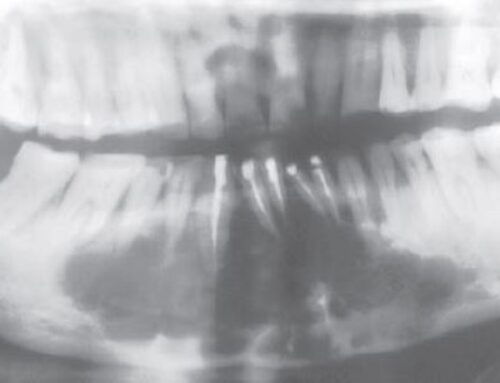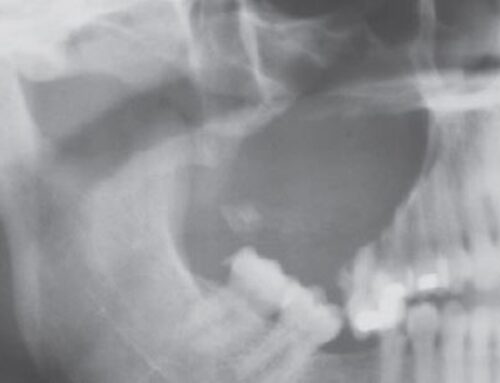Incidence
- children, mean age 10, rarely encountered in adults
Location
- posterior jaws, majority involve the mandible; male>female (3:2)
Radiographic Features
- well-circumscribed unilocular radiolucent lesion containing variable amounts of calcified material with the radiodensity of tooth structure. The calcified material may appear as multiple, small radiopacities or as a conglomerate mass. Only 5% of ameloblastic fibro-odontomas do not contain any calcified structures and appear radiolucent. In most cases, an unerupted tooth is present at the margin of the lesion, or the crown of the unerupted tooth may be included in the defect.
Compare to
- represents early stage of odontoma
Histopathology
- narrow cords and small islands of odontogenic epithelium in a loose primitive appearing connective tissue that resembles the dental papilla; the calcifying element consists of foci of enamel and dentin matrix formation in close relationship to the epithelial structures
Treatment
- curettage with easy separation from bony bed; does not invade surrounding bone
ameloblastic fibro-odontoma is defined as a tumor with the general features of an ameloblastic fibroma but that also contains enamel and dentin
Tumor can exhibit progressive growth and cause considerable deformity and bone destruction






